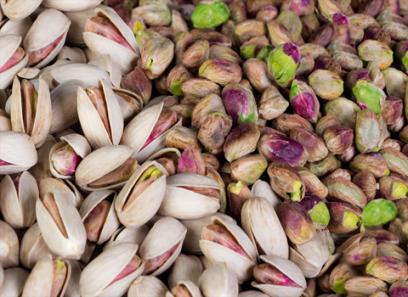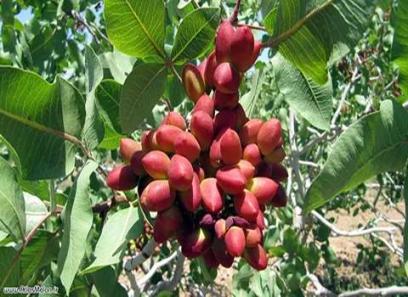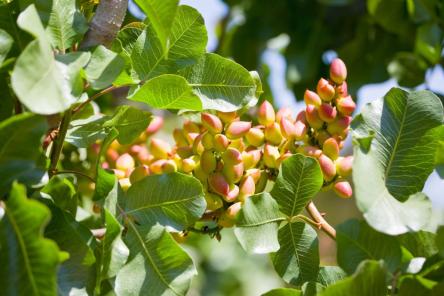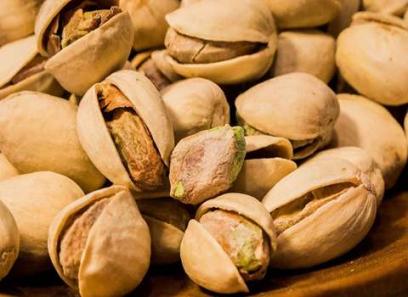The pistachio, a small, green-hued nut that packs a powerful flavor and nutritional punch, has a long and fascinating history that stretches back thousands of years.
.
 This delightful nut, enjoyed worldwide, has its roots in the ancient civilizations of the Middle East.
This delightful nut, enjoyed worldwide, has its roots in the ancient civilizations of the Middle East.
Let’s explore the origins of this remarkable nut and its journey across continents and cultures.
Ancient Origins: The pistachio tree (Pistacia vera), a member of the cashew family, is thought to have originated in the mountainous regions of western Asia, primarily in present-day Iran, Iraq, and Turkey.
It was one of the earliest nuts to be cultivated by humans, with evidence of pistachio consumption dating back over 9,000 years.
Cultivation and the Silk Road: The cultivation of pistachio trees quickly spread throughout the Middle East, reaching Greece and Rome around 700 BCE.
The Greeks held pistachios in high regard, associating them with wealth, fertility, and culinary delights.
It was during the time of Alexander the Great that the pistachio made its first appearance in India. From there, it spread further East, becoming a beloved nut in China, where it was highly valued for its taste and medicinal properties.
The pistachio’s journey along the Silk Road, the ancient network of trade routes connecting Europe with Asia, contributed to its popularity and widespread cultivation throughout Central Asia and the Mediterranean region.
Medieval Europe and Beyond: The pistachio remained a delicacy in medieval Europe but became more widely available during the Renaissance era.
The nuts gained popularity in France and Italy, eventually making their way to Spain via trade routes.
Spanish missionaries then introduced pistachio cultivation to the Americas, specifically to Mexico and California.
The Golden Age of Pistachios: Over the centuries, pistachio production expanded across different countries and continents.
California emerged as a major producer in the 20th century, thanks to favorable climate conditions and advanced agricultural practices.
Today, it is the largest exporter of pistachios globally.
..
 Today’s Pistachio Industry: Pistachio trees thrive in arid and semi-arid regions, where they can withstand high temperatures and scarce water resources.
Today’s Pistachio Industry: Pistachio trees thrive in arid and semi-arid regions, where they can withstand high temperatures and scarce water resources.
The United States, Iran, and Turkey are the three largest producers of pistachios, accounting for the majority of worldwide production.
Other significant pistachio-producing countries include Syria, China, and Greece.
The versatility of pistachios extends beyond its role as a healthy snack.
It is a popular ingredient in a wide variety of cuisines, from savory dishes to desserts. Its vibrant green color and unique flavor make it a favorite in ice creams, pastries, sauces, and even as a garnish.
Conclusion: The pistachio, with its rich history and global significance, has traveled far and wide across time and continents.
From its origins in the Middle East to its cultivation in various countries, this nut has captivated people throughout centuries with its taste, versatility, and numerous health benefits.
As we indulge in the pleasure of cracking open a pistachio shell, let us appreciate the centuries of human effort and exploration that have brought this extraordinary nut to our tables.
In addition to its cultural and culinary impact, the pistachio industry has also brought about numerous economic benefits to the regions involved in its cultivation.
Many countries have recognized the value of pistachio production and have invested in research and development to enhance yields and improve the quality of the nuts.
For consumers, the popularity of pistachios continues to grow as awareness of their nutritional value increases.
Pistachios are known for being a nutrient-dense snack, packed with heart-healthy fats, fiber, protein, and a range of vitamins and minerals.
They have also been linked to various health benefits, such as improving heart health, aiding weight management, and promoting a healthy gut.
…
 As the demand for pistachios rises, farmers and agricultural organizations are working to implement sustainable cultivation practices.
As the demand for pistachios rises, farmers and agricultural organizations are working to implement sustainable cultivation practices.
This includes efficient water management, integrated pest management techniques, and promoting biodiversity to maintain the health of the pistachio orchards and surrounding ecosystems.
The future of the pistachio industry looks promising, with new markets emerging and an increasing focus on product innovation.
Manufacturers are now incorporating pistachios into a range of products beyond traditional snacks, such as energy bars, nut butter spreads, and even plant-based milk alternatives.
This diversification allows for continued growth and the exploration of new uses for this versatile nut.
However, challenges still exist within the industry.
Climate change and environmental factors pose risks to pistachio cultivation, as extreme temperatures and water scarcity can negatively impact trees’ productivity.
Additionally, pests and diseases can pose a threat to pistachio crops, necessitating ongoing research and preventative measures.
Despite these challenges, the pistachio industry remains resilient and continues to provide economic stability to many regions worldwide.
Its rich origins and global significance make it a captivating and influential nut that has stood the test of time.
So the next time you enjoy a handful of pistachios, take a moment to appreciate the incredible journey this nut has taken throughout history.
From its ancient roots in the Middle East to its role as a global agricultural commodity, the pistachio is a testament to the ingenuity and resilience of humankind and a delicious reminder of our interconnectedness across time and continents.




